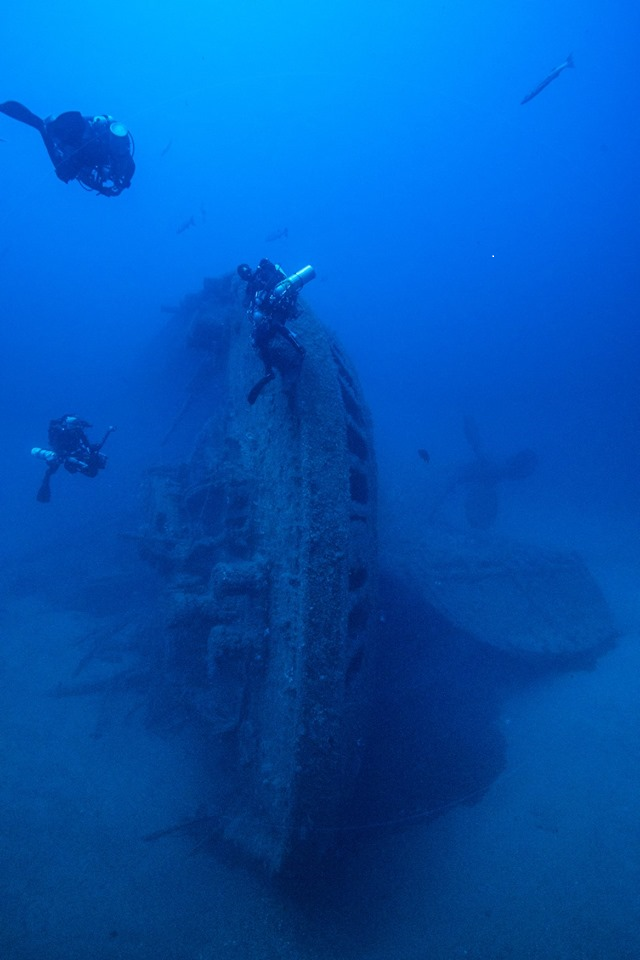SHARKS AND SHIPWRECKS

Sand tiger sharks commonly gather in large numbers around shipwrecks such as the E.M. Clark, torpedoed by a German U-boat in 1942. (ECU photo by John McCord)
Divers from East Carolina University and its Coastal Studies Institute, North Carolina Aquariums, and the National Oceanographic and Atmospheric Administration recently deployed acoustic receivers on shipwrecks off the North Carolina coast to track the movement of tagged sand tiger sharks.
The focus of the project, which involves the N.C. Aquariums and the Southeast Zoo Alliance for Reproduction and Conservation, is to gain a better understanding of the migratory patterns and movements of sand tiger sharks off the Atlantic coast.
The coast of North Carolina, known as the Graveyard of the Atlantic, is littered with a large number of shipwrecks, many in water shallow enough for scuba divers to access.
“Some of these wrecks are artificial reefs intentionally deployed by the N.C. Division of Marine Fisheries,” said Mark Keusenkothen, ECU’s director of diving and water safety. “Others are casualties of German submarine action in World War II.
“Sand tiger sharks commonly gather in large numbers around these shipwrecks — and these gatherings can be quite spectacular. The combination of historic shipwrecks and large groupings of sharks make diving in coastal North Carolina a pretty unique experience.”
Sand tiger sharks are large, growing to more than 10 feet long and weighing as much as 350 pounds, but fairly benign, although they have a menacing appearance due to their exposed teeth.
Receivers on shipwrecks such as the E.M. Clark, torpedoed by a German U-boat in 1942, can detect signals from surgically implanted transmitters when tagged sharks are nearby, allowing researchers to assess the sharks’ patterns of movement.
Preliminary findings indicate that individual sand tiger sharks, which are highly migratory as a species, return to the same areas and even the same shipwrecks as they pass through the area.
Researchers hope the growing body of information about the sharks and their habitat will help in the conservation effort for the species.

